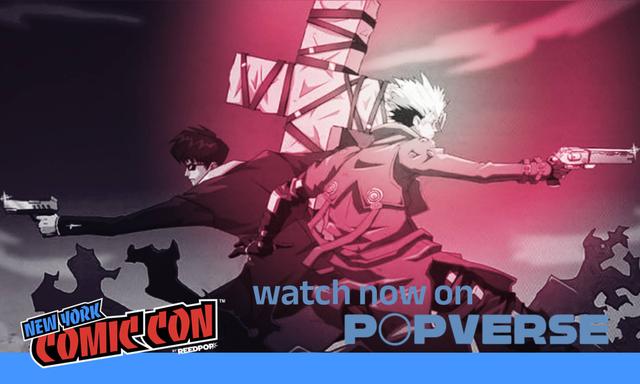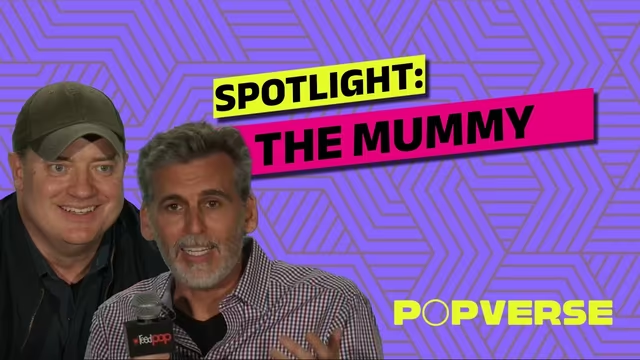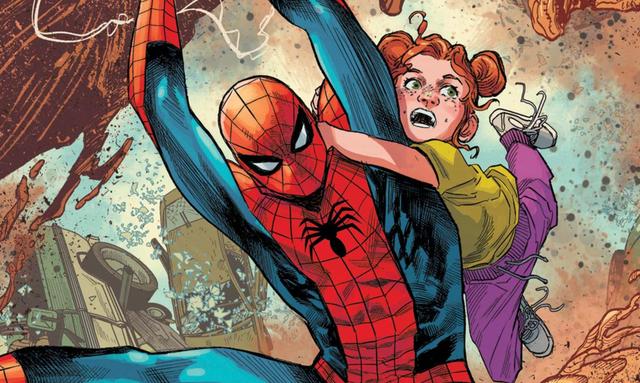If you click on a link and make a purchase we may receive a small commission. Read our editorial policy.
Zine librarian Jenna Freedman chats about the Barnard Zine library and why every grrrl's story is important
Barnard College's campus features a zine library that focuses on the work of women, nonbinary people, and trans men.

In 2003, librarian Jenna Freedman pitched the idea of a zine library to Barnard College in New York City, and her proposal was accepted. The original budget for the project was $500, and it took a year or so of work and planning to get zines up on the shelves. Now, Barnard Zine Library has expanded into its own room, and its open collection includes 5,000 zines with thousands more still waiting to be processed.
Popverse had a chance to sit down with zine librarian Jenna Freedman to chat about the beginning of the library, the many different types of zines, and the importance of every grrrl's story.
Popverse: How did you get into zines?
Jenna Freedman: In the '90s I was kind of on the periphery of the spoken word scene, and there were some zines that were part of that community. So I got some stories and poems published in literary zines, and that was cool, but the lit zine didn't really capture me. But when I went to library school, I met Celia Perez, who gave me her zine and it was a perzine [personal zine] and that really moved me. I became really interested in Celia zines and then got more interested in zines in general.
Shortly after meeting Celia. I started making my own zines. I came to Barnard in 2003, and a friend sent me an article about zines in public libraries, and I thought, 'Oh, we should have zines here.' So, I pitched the collection to my boss at the time. And she said, yes. So through collecting zines, I've gotten more into zines and, you know, been exposed to a lot more types of zines.
Can you talk about the types of zines? You just used the phrase 'perzine,' can you go a little more detail about those categories?
Yeah. So we have personal zines, which are zines that are typically in written in a first person format about someone's own life and experiences. And there are political zines, which, you know, are typically focused around a particular topic. Right now, I'm thinking of reproductive justice zines because we've got an event coming up.

There can also be zines that are both. For the event that is coming up, we're doing close readings of reproductive justice zines and the one that I'm going to do is called Negrita #4, Abortion Etiquette: take care of your friends [by Gloria Diaz]. And so, it's kind of a political zine in that she's writing about how you should care for someone who's had an abortion. And it's kind of implied that it's a pro choice zine and there's maybe politics to how you support somebody-- but it's also writing about her own experience. And now I'm realizing that it's also what I call a DIY. Do it Yourself zine, because she's teaching you or sharing with you how to do something.
And that's an important part of zine culture, the DIY, do-it-yourself kind of anarcho punk philosophy.
So, there's always a lot of overlap. There's many comics as well as lit zines that can contain poetry or stories. And the mini comics too almost always have a crossover. Like, they could be personal, they could be autobiographical comics or they could be DIY or political like the others.
There's also art zines, which I sort of classify as zines that are less linear or that have some of the fancier techniques like a lot of screen printing or riso printing or letterpress.
You mentioned that you're doing this workshop and you also teach, can you tell me what your teaching usually takes the form of?
The [upcoming] workshop is, as I said, close readings. And what I love about doing this, this will be our second time out, is that it's student assistants as well as a part-timer and me, and this time we've invited other people to participate. So I think someone from Columbia Reproductive Health Club is gonna analyze a zine, maybe even the one that their club made, and one of my coworkers is looking at a zine to analyze. I'm excited about that collaboration, about students sharing their expertise and just being full partners, that it's not just a paycheck job, but there might be a greater investment and return, to use corporate language-- I don't really mean it that way.

When I do classes, very often people are coming in to want to understand the history and culture of zines or to do zine making. I've got this wonderful cart here that I got right before the pandemic. So it just sat my office for a while, but it's full of all sorts of collage supplies... magazines... Zingermans… Barnard, students, really love food. So, I like having graphics of food available to them.
There are zine making workshops. But I'm really excited when folks come in for reviewing the content. I have a class coming in next week that's a theater class; Performing Publics is the name of the class. I think the professor is interested in the zine library as a radical archive, But also I'm assuming in what ways zines are a performance, maybe of self-- I'll learn more as I prepare for this class.
How has the zine library developed over the years?
It started off as just one bookstack with zines on the shelf, and it's become not just more zines, but it also has a much bigger presence, a big space. It's got three walls of zines, and there's the media podium at the front, ao I can do these classes with some tech.
It's great that zines have become more integrated into coursework. One of the best things that happened was starting the Zine Club back in 2010. Originally, it was my student assistant who was the head of the club, but she graduated the semester after it started.
But the club took on its own life. In the beginning, I would provide the refreshments for it, and I'd always come in and say hi, but they've become much more independent. And I like that. They have like a greater ownership of the library and the space and, you know, have their own thing that they do.

I feel like that's been really powerful, and it ebbs and flows because students are not here for very long. The culture changes quickly. There've been some years where the zines were really central to campus activism, and I think other years, they have been more part of literary or art movements or queer expression.
I'm doing a lot more instruction now, which is great. I love being able to engage with faculty and students in a more like formal pedagogical way.
That leads to my next question. You're working with, I assume, mostly undergraduates. Is the the library usually their first introduction into zines?
I do work with grad students sometimes. I've got a couple of professors at Columbia that that come here over and over. The undergrads that engage with zines, to some of them, they're new, but they're a crafty bunch. They do really like making art. They're a political bunch. They're a queer bunch. So there's a lot in zines for them, I think.
The programming we do, I feel like it seeps into them. Of course, every undergrad that comes through doesn't get to know the whole history and culture of zines— and the history and culture of zines, as you know, is always changing. Because our collection is open, people can just take zines off the shelf as they like, I don't necessarily know what they're doing, which is, you know, great for them— kind of a bummer for me. I'd like to know, but you can sort of tell by what sections are messy or what zines are on the table to be reshelved.
Are there a few zines that you're particularly excited about that are in your collection right now?
I'm always excited about my friend Celia, who is the person who turned me on to zines to begin with. I love her zines, although she hasn't made a new one in a while. There's a zine called Think About the Bubbles by Jo Hatton. Yeah, that's one of my favorite zines. I love the way Jo uses text as art. Words could be really big, or they can be really heavy or even in shapes, and to me that's really evocative and kind of satisfying as a person who isn't a fine artist myself. I can't really draw, so I love seeing something that's accessible to me art-wise, although Joe is actually a really good artist.
But I also love zines that have crude drawings, you know. I think of Cindy Crabb's Doris zine. That is a lot of stick figures, and there's some things super endearing about those. There's so many zines in the collection that I love, and I'm enjoying this Negrita Abortion Etiquette zine. The back of the zine just black and white stripes. The black stripes are much thicker than the white stripes, and I'm just like, 'What's this mean? What is she telling us about abortion etiquette, and did she know she was telling us or was she just moved to draw stripes?'
I just I think media literacy with zines is really fascinating.

Are there any particularly 'historically important' zines that you have? I'm saying that in quotes because that's kind of a loaded question.
I appreciate that you framed it that way, as a loaded question. Because there are zines that will be cited pretty often in response to a question like that, which would be Evolution of a Race Riot edited by Mimi Nguyen or Doris Zine by Cindy Crabb.
But what I think is special about zines is that they are a site for what I call every grrrl (with the three rs). Every grrrl is important and has a story. I know that this may sound disingenuous, but all of those little stories are so important and wonderful.
In librarianship, there's five laws of library science, and one of them is 'Every person, his or her book, every book, it's reader.' And I think that is true for zines.
Learn more about the Barnard Zine library here.
Follow Popverse for upcoming event coverage and news
Find out how we conduct our review by reading our review policy
Let Popverse be your tour guide through the wilderness of pop culture
Sign in and let us help you find your new favorite thing.
















Comments
Want to join the discussion? Please activate your account first.
Visit Reedpop ID if you need to resend the confirmation email.